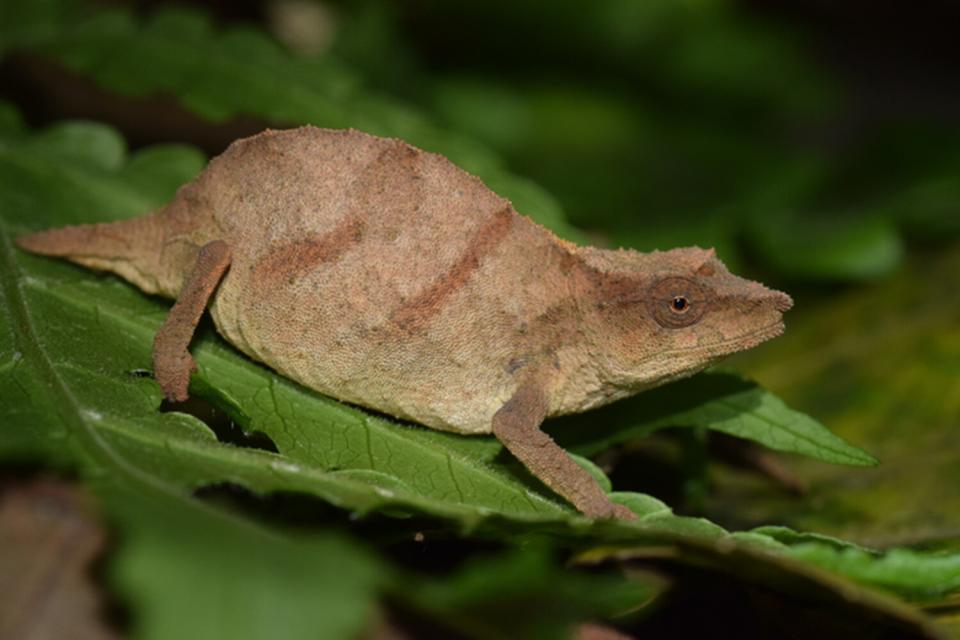Rare Pygmy Chameleon Believed to Be Extinct Found 'Clinging to Survival' in Malawi

Krystal Tolley
Scientists are urging immediate conservation efforts after one of the world's rarest species of chameleons was found "clinging to survival" in small patches of forest in Malawi.
According to a study published on Monday in one of Cambridge University Press' peer-reviewed academic journals, the Chapman's pygmy chameleon — which was previously thought to be extinct due to deforestation — was discovered in just three locations by a team from the South African National Biodiversity Institute (SANBI) and the Museums of Malawi.
"The first one we found was in the transition zone on the forest edge, where there are some trees but mostly maize and cassava plants," Professor Krystal Tolley, lead author of the study and a herpetologist at SANBI and the University of the Witwatersrand in South Africa, said in a statement.
"When we found it we got goosebumps and just started jumping around," Tolley recalled. "We didn't know if we would get any more, but once we got into the forest there were plenty, although I don't know how long that will last."
Tolley and her team, who first made their findings in 2016, estimate that the species' numbers have shrunk by 80 percent since the 1980s.

Krystal Tolley
RELATED: Newly Discovered Itty-Bitty Chameleon Could Be the World's Smallest Reptile
A DNA analysis reviewed in the study also suggest that the species are surviving in fragmented populations, meaning that chameleons in each forest patch are isolated within their own location and unable to move to breed with neighboring reptiles of their kind
This, researchers say, will reduce the species' genetic diversity over time and increase their extinction rate if conservation efforts aren't made.
"The forest loss requires immediate attention before this species reaches a point from which it cannot return," Tolley noted. "Urgent conservation action is needed, including halting of forest destruction and recovery of habitat to promote connectivity."
RELATED VIDEO: Northern White Rhino Dies Leaving Only 3 Of Her Kind
First described in 1992, the Chapman's pygmy chameleon grows only to a length of just 5.5 centimeter — or a little over 2 inches.
While other species of chameleons can be "hysterical, hissing and biting," the Chapman's pygmy chameleon are "little, gentle creatures," according to Tolley.
"Chapman's in particular are one of the smallest and don't have a prehensile tail like most chameleons, perhaps because they aren't particularly arboreal but walk about on the forest floor in the leaf litter, crawling up into low bushes at night to sleep. They blend right into the leaf litter and perfectly pattern match the dead leaves," she said.
Tolley added, "I get sad when I think what's happening to them — what we are doing to their habitat. They are really just helpless victims."
The International Union for Conservation of Nature (IUCN) currently list the Chapman's pygmy chameleon as critically endangered on its Red List of Threatened Species.

 Yahoo Movies
Yahoo Movies 